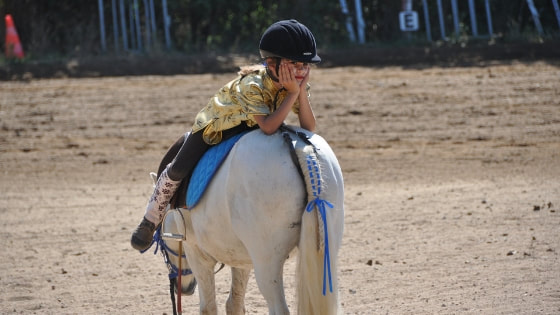|
To Plait or Not to Plait - an excerpt from "Winning Horsemanship. A Judge's Secrets And Tips For Your Success" by Joanne Verikios There are many ways to present your horse’s tail and mane at showtime, from au naturel to pulled, plaited, banded or braided; hogged and taped like a polo pony; or beribboned and decorated with flowers, ears of wheat and bells like a draught horse. Much depends on the event and the breed. After that, it’s down to your own skills, time available and personal preferences. During the 2015 Australian Warmblood Horse Association Assessment Tour, Silvia Ahamer demonstrated how a plaited tail can constrict a horse’s movement – a revelation for the owners and a godsend for several horses when their tails were set free! In their guidelines, the AWHA actually recommends that tails not be plaited and that plaits, if used, be loose. Nevertheless, some people did present their horses plaited up to the nines, which let us see quite a few before and afters because everybody accepted our suggestion to un-plait. I remember a ridden mare who held her tail clamped down and to one side with it plaited. Then you could see her centring her tail and relaxing her back when the plaits came out and suddenly she moved a whole lot better. It made me uneasy to think of all the tails I have plaited in the past. I probably even wondered why the poor horse “didn’t go as well as he did at home”. These days, I would definitely opt for other methods of neatening the top of the tail if required, or simply accept that horses have tails and it is alright to present them in all their glory. TIP: If you opt to plait, always ease the dock into its natural curve when you have finished. Taking thicker sections of tail may be more comfortable for the horse than the very fine strands that are often seen. Think basket weave rather than birdcage. If the mane is to be plaited, it is customary to have an uneven number of plaits along the neck. The forelock is usually plaited but may be left loose for most events. Manes may not have such a big effect on movement because the spacing of the plaits allows for flexion of the neck, but I am sure that if some hairs were pulling badly it could impact on a horse’s attitude, so do not plait so tightly. TIP: Experiment ahead of time with all your grooming enhancements, including how many and what kind of plaits you will have, then stick to your plan on show day. If you enjoyed this post, you might also like Horse Clipping Tips and Manes, Beards and Whiskers - To Trim Or Not To Trim.
Feel free to LIKE & SHARE! |
From a very early age I have been able to tune in to what horses and ponies were thinking and what they were likely to do next.
Archives
September 2020
Categories
All
|



 RSS Feed
RSS Feed